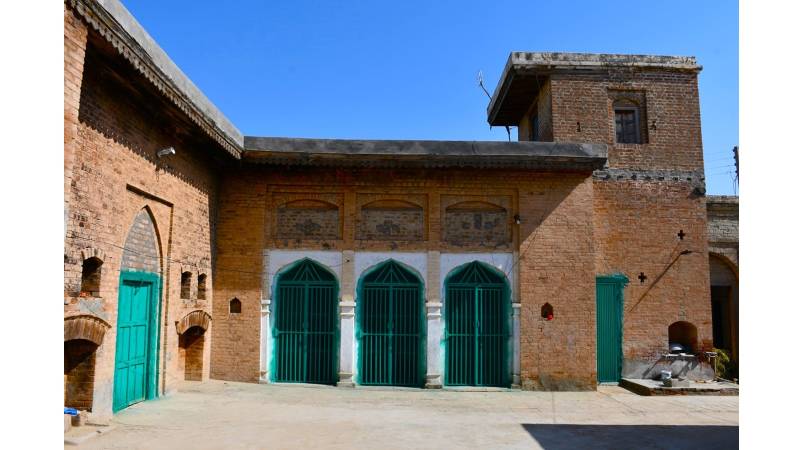
Dhoke Musa is a small settlement of Bahi Pathans in Sadiqabad village in Kot Gulla Union council of Chakwal’s Lawa tehsil. It lies 1 km south off the Multan Khurd-Pachnand Road. It is located about 35 km north of Lawa town and 60 km east of Talagang town. I visited the village with my friend Tariq Mehmood Malik to see beautiful stone-built mosques and the havelis of the Bahi Pathans. Here, also, I met with a few notables of the villages including, Malik Ghulam Farooq and Malik Hameed Iqbal Khan.
During interviews with them, I came to know that the village was founded by Mian Musa Bahi Pathan. He came from Kalabagh and founded a village around 1860-1870. Malik Hameed Iqbal Khan, great-grandson of Mian Khuda Bakhsh, told me that Mian Bhura, the brother of Mian Musa, also migrated with his brother from Kalabagh and settled in the newly founded village. Today, the descendants of both Mian Musa and Mian Bhura live in Dhoke Musa village.
This family of Bahi Pathans produced many eminent landlords, businessmen bureaucrats, advocates, military personnel and teachers.
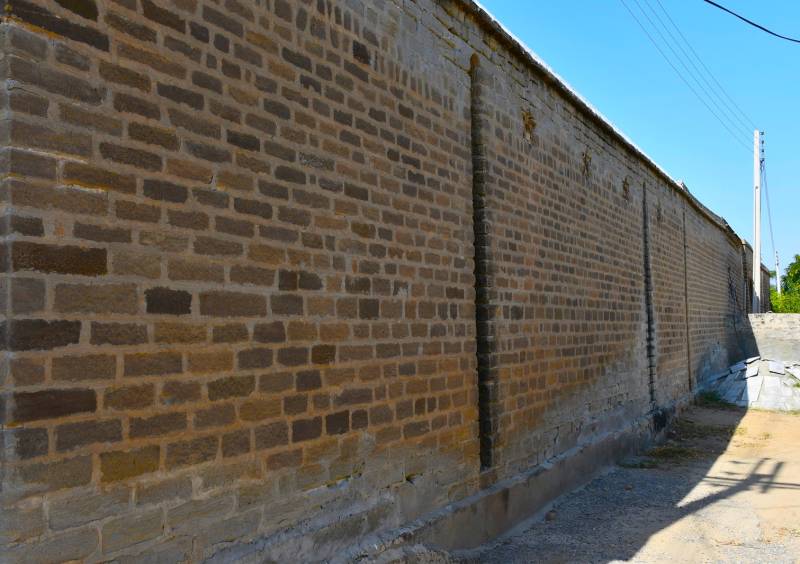
Dhoke Musa is noted for a stone-built mosque and two fortified havelis of the Bahi Pathans, which belong to the families of Mian Musa and Mian Bhura respectively. Apart from the history of the mosque and fortified mansions, I also had discussions with notables of the Bahi Pathans on their genealogy and their ancestor Mian Musa’s arrival at the present village. According to Hameed Iqbal Khan, Mian Musa was a big landholder in the area.
When Mian Musa founded the village, he also built a small mosque in the village which was constructed of unbaked bricks. Later it was rebuilt by his grandson Mian Khuda Bakhsh. Mian Musa had two sons Mian Suleman and Mian Rasool. Mian Suleman had three sons – Mian Khuda Bakhsh, Mian Alam Din, and Mian Umer. After the death of his father Mian Suleman, Mian Khuda Bakhsh became the Numbardar of Sadiqabad village which was formerly known as Chamcha. Furthermore, Mian Khuda Bakhsh had four sons Malik Sultan Mahmood, Malik Walidad Khan, Malik Rahimdad Khan and Malik Karimdad Khan. After the death of his father Mian Khuda Bakhsh in 1927, Malik Sultan Mahmood became the Numbardar of Sadiqabad village. Malik Sultan Mahmood rebuilt the mosque in 1938. The famous mason Muhammad Hussain of Jabbi Shah Dilawar, a village near Dandi-Suriali in Talagang tehsil, was employed to construct the mosque. Mistri Muhammad Hussain was the famed mason of Jabbi Shah Dilawar who built a few stone-built mosques and mansions in Chakwal.
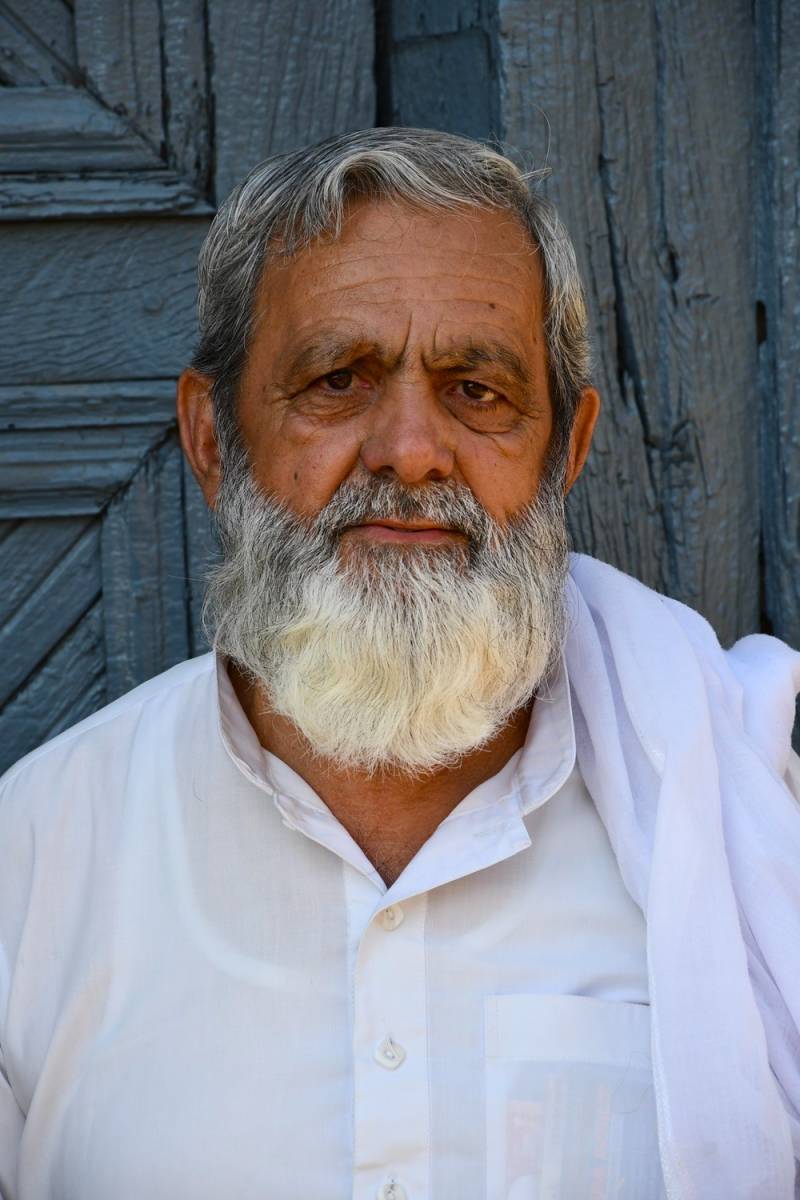
He dressed and engraved the stones which were used in the Jamia mosque of Dhoke Musa. It took a few years to complete the Jamia mosque. This is the probably only stone-built mosque in the neighbouring villages. The façade of the mosque is decorated with three amulet patterns.
Apart from the mosque, the most magnificent buildings in Dhoke Musa village are two havelis of Bahi Pathans which were built by Mian Khuda Bakhsh and Mian Lal for their sons respectively. In 1902, Mian Khuda Bakhsh built an impressive fortified haveli for his four sons Malik Sultan Mahmood, Malik Walidad Khan, Malik Rahimdad Khan, and Malik Karimdad Khan. Later the haveli was renovated and expanded by Malik Sultan Mahmood. This haveli is also believed to have been constructed by Mistri Muhammad Hussain. He was also assisted by other masons as well but he was the chief mason. It is said the stone for haveli and mosque was brought from Leti Nala, a tributary of the Soan River. Some stone was also brought from Soan Sakesar to Dhoke Musa and was used in the haveli.
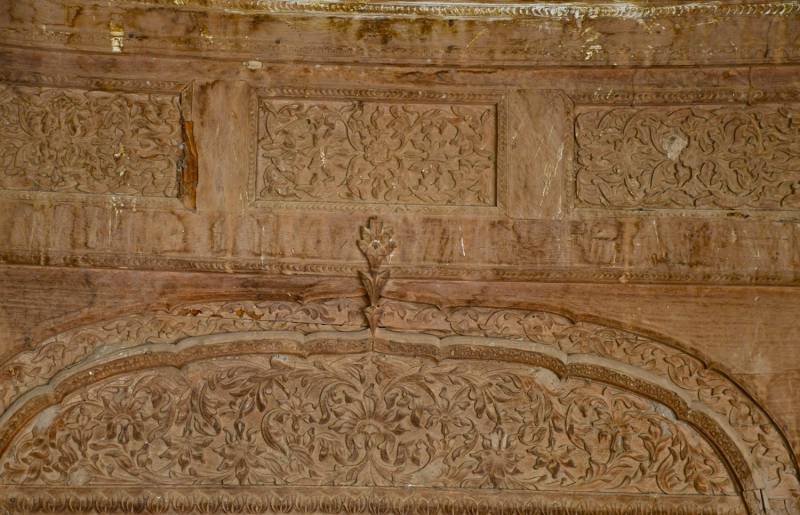
The main gateway of the haveli of Mian Khuda Bakhsh opens to the east. The stone built-portal of the haveli has on either side jharokha-shaped niches which were ostensibly created for keeping oil lamps. Through this gateway, one enters the haveli. While entering the haveli, one can notice the choubara of Malik Sultan Mahmood on the right. This choubara in the haveli was first built by Mian Khuda Bakhsh and was later extended by Malik Sultan Mahmood himself. It is built of burnt bricks. The distinctive features of this choubara are woodwork and stone carvings. This choubara is also noted for carved wooden doors and wooden ceilings. Interestingly, the names of Mian Khuda Bakhsh’s sons- Malik Sultan Mahmood, Malik Rahimdad, Malik Walidad Khan, and Malik Karimdad Khan- are also written on a wall of choubara of Malik Sultan Mahmood.
Malik Sultan Mahmood was a big landlord. He actively took part in local politics. He also built a splendid guest house (Mehmaan khana) outside the haveli where his friends and other guests used to stay. After he died in 1984, his son Malik Abdul Hafeez Khan (died 2019) became the Numbardar of Sadiqabad village and chairman of Union Council Kot Gulla. Now, Malik Zahoor Ahmad Khan, the son of Malik Abdul Hafeez Khan is the Numbardar of Sadiqabad village.
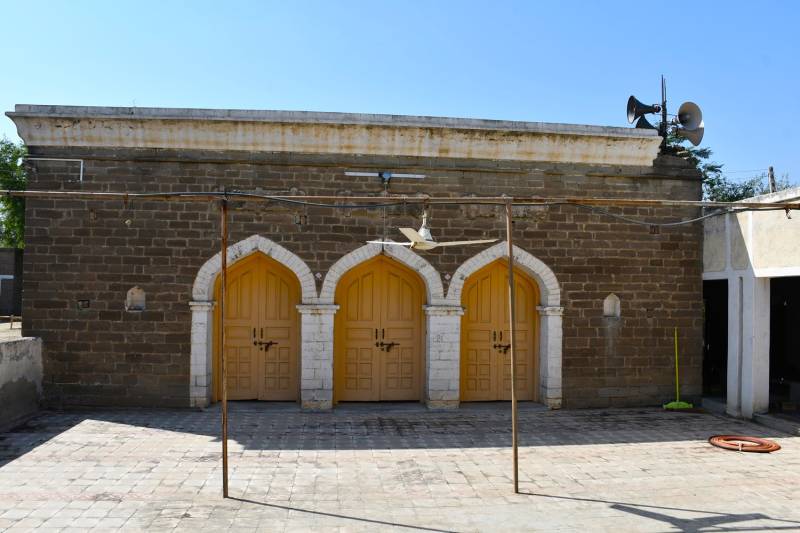
Malik Walidad Khan son of Mian Khuda Bakhsh served in the British Indian Army and retired as havaldar in 1946. His great-grandson Malik Hameed Iqbal Khan told me that Malik Walidad Khan (died 1994) also posted for two years as a soldier in Germany. He also wrote a manuscript about his family history which is now in the possession of Malik Hameed Iqbal Khan.
Malik Rahimdad Khan(died 1984) son of Mian Khuda Bakhsh was a famous player of tent pegging. Once he also went to Delhi to participate in a tent pegging match in pre-partition. Malik Karimdad Khan (died 1999) son of Mian Khuda Bakhsh was fond of keeping different breeds of livestock in his farmhouse.
Malik Ghulam Farooque, son of Malik Rahimdad Khan and grandson of Mian Khuda Bakhsh, was very kind person who took me inside the haveli. He showed me the houses of Malik Sultan Mahmood, Malik Walidad Khan, Malik Rahimdad Khan and Malik Karimdad Khan. I was impressed by the grandeur and magnificence of the haveli of Mian Khuda Bakhsh. Each of the houses inside the haveli is noted for ornate woodwork, stone craft, and brickwork. Now the families of Malik Sultan Mahmood, Malik Rahimdad Khan and Malik Karimdad Khan live inside the haveli. However, the family of Malik Walidad Khan lives outside the haveli in Dhoke Musa.
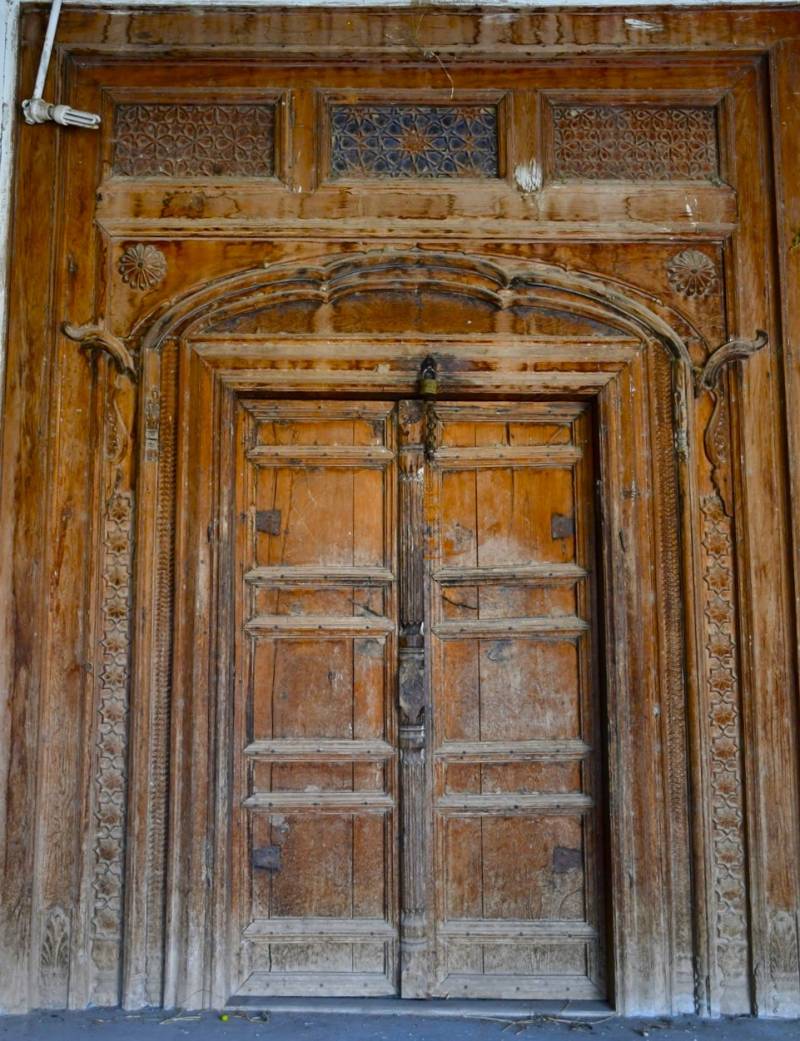
Malik Ghulam Farooque also showed me the haveli of Mian Lal. The main gateway of the haveli of Mian Lal opens to the south. This haveli is also noted for beautiful wood carvings. Mian Lal (died 1952) was the son of Mian Bhura. Mian Lal had one son Noor Muhammad who had two sons Malik Ghulam Muhammad (died 1981) and Malik Hasan Daud (2009). Malik Ghulam Muhammad was a chartered accountant who died in London in 1981.
This family of Bahi Pathans also produced eminent advocates. One such was Malik Khudadad Khan who was an advocate at Rawalpindi High Court. Malik Khudadad Khan (died 1996) was the son of Malik Walidad Khan and grandson of Mian Khuda Bakhsh.
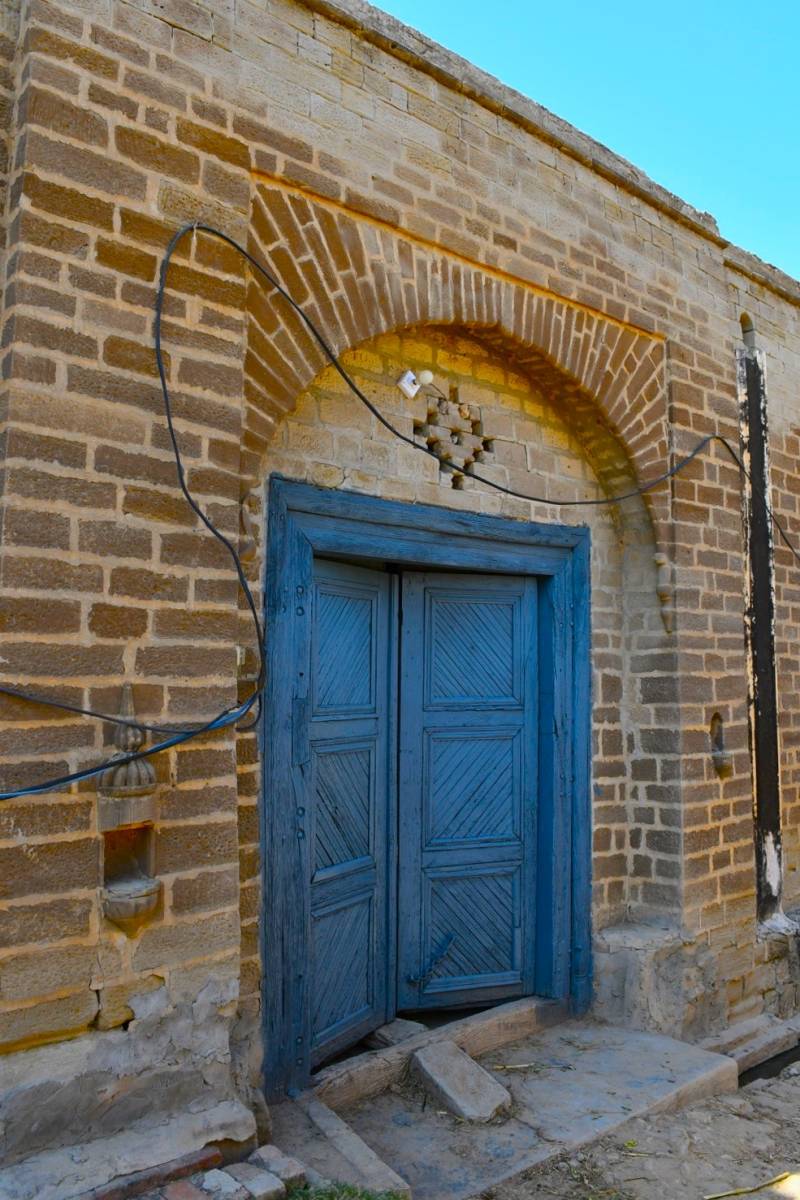
Each of the houses inside both havelis is noted for wooden ceilings, doors and stonecraft - reflecting the political power and wealth of the Bahi Pathans of Dhoke Musa. These havelis are also identity makers of the Bahi Pathans in the entire union council of Kot Gulla. Such imposing havelis are not seen in any other village in the Kot Gulla union council.

